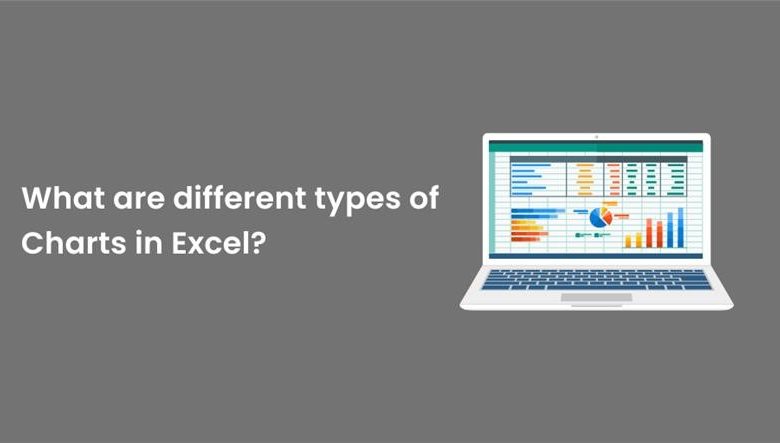What Are Different Types of Charts in Excel?

Microsoft Excel is a flexible application that not only aids in data organisation and analysis but also allows users to graphically portray data using numerous charts. Charts are vital in Excel because they help users better grasp data patterns, trends, and relationships. In Excel Certification, knowing the various Types of Charts in Excel can improve your data visualisation abilities and help improved decision-making, whether you are a data analyst, business professional, or student. In this blog, we will look at some of Excel’s most frequently used types of charts, their uses, and how to make them.
Table of Contents
- Different types of charts in Excel
- Column Chart
- Bar Chart
- Line Chart
- Pie Chart
- Scatter Plot Chart
- Area Chart
- Radar Chart
- Doughnut Chart
- Histogram
- Waterfall Chart
- Gantt Chart
- Heat Map
- Creating Charts in Excel
- Conclusion
Different types of charts in Excel
Here are different types of charts in Excel:
Column Diagram
The column chart is one of Excel’s most fundamental and extensively used chart types. It depicts data as vertical bars, with the height of each bar corresponding to the data point’s value. Column charts are excellent for comparing data across categories or displaying changes over time.
Bar Graph
Like the column chart, the bar chart uses horizontal bars to depict data. It is especially beneficial when dealing with extensive category labels or comparing data horizontally.
Line Diagram
Line charts are excellent for displaying trends and patterns over time. It links data points with straight lines, letting viewers see the development of the data. In financial analysis, line charts are frequently employed.
The Pie Chart
Pie charts are circular graphs broken into slices that indicate several categories or percentages of a whole. They are frequently used for data with a small number of categories and effectively indicate the percentage of each type in a data collection.
Scatter Plot Diagram
Scatter plots show how two variables are related to each other. Each dot on the chart represents a data point, and the arrangement of these dots can reveal any connections or patterns between the variables.
Area Diagram
Area charts are identical to line charts, except the space between the line and the x-axis is coloured, depicting cumulative totals or the change over time.
Radar Diagram
Radar charts, also known as spider charts or web charts, show data points on various axes linked together to form a polygon. They can be used to compare various variables in relation to a centre point.
Doughnut Graph
If you need to compare categories within the same data series, you may find doughnut charts helpful. These charts resemble pie charts, but with a hole in the center that creates a ring-like appearance.
Histogram
Histograms show how data is distributed over different intervals or bins. They are especially effective for finding trends and analysing data patterns in massive data sets.
Waterfall Diagram
The cumulative influence of positive and negative numbers over time is depicted via waterfall charts. They are frequently used in financial analysis to show how an account’s balance fluctuates over time.
Gantt Diagram
Project management frequently uses Gantt charts to depict job timelines and dependencies. They aid project managers in visualising and tracking project progress.
Heat Map
Colours are used in heat maps to indicate data values in a two-dimensional matrix. They may be used to visualise big data sets and find patterns or trends in complicated data.
Creating Charts in Excel
Excel has an easy-to-use interface for creating numerous sorts of charts. To make a chart, simply follow these steps:
- Choose the information you wish to include in the chart.
- On the Excel ribbon, select the “Insert” tab.
- From the “Charts” category, select the type of chart you wish to create.
- Excel will build the chart depending on the data you enter.
- To improve readability, customise the chart’s design and add chart components such as titles, labels, and data labels.
Conclusion
Excel has many chart types for effectively visualising and analysing data. Understanding the many types of charts available in Excel allows users to choose the optimal visualisation method for their data analysis requirements. Excel’s charting features are essential for creating interesting and effective charts, whether used to display financial data, analyse patterns, or manage projects. Mastering the art of chart creation in Excel can enhance the speed of data interpretation, facilitate data-driven decision-making, and unleash the full potential of this robust spreadsheet software.

